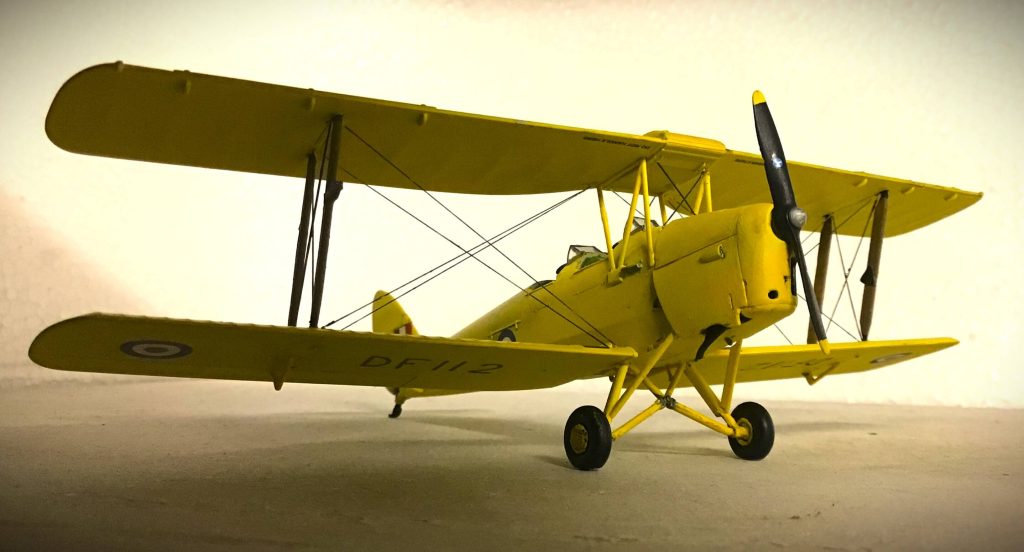The Model
I have built two DH.82, both in RAF trainer version, for your pleasure. The first represents the very aircraft in which I flew all those years ago and the second a generic all trainer yellow colour scheme. Both models have been created from the superb 1/48 Airfix kit.
The DH.82 is a small aircraft which makes for a small model, despite being in 1/48 scale. However, the build on both examples was smooth. I decided to expose the rather detailed Gipsy engine on the first. Great to build with minimum fuss, even the rigging was simple and no PPE!
The first, K4259, is a DH.82A which resides at Imperial War Museum, Duxford aerodrome and is still available for pleasure flights as far as I know. It is represented in the doped silver linen scheme with the trainer yellow stripes on the upper and lower wings.
The second is a DH.82A DF112, civil registration G-ANRM, in the overall trainer yellow scheme, also based at the IWM Duxford, England.
